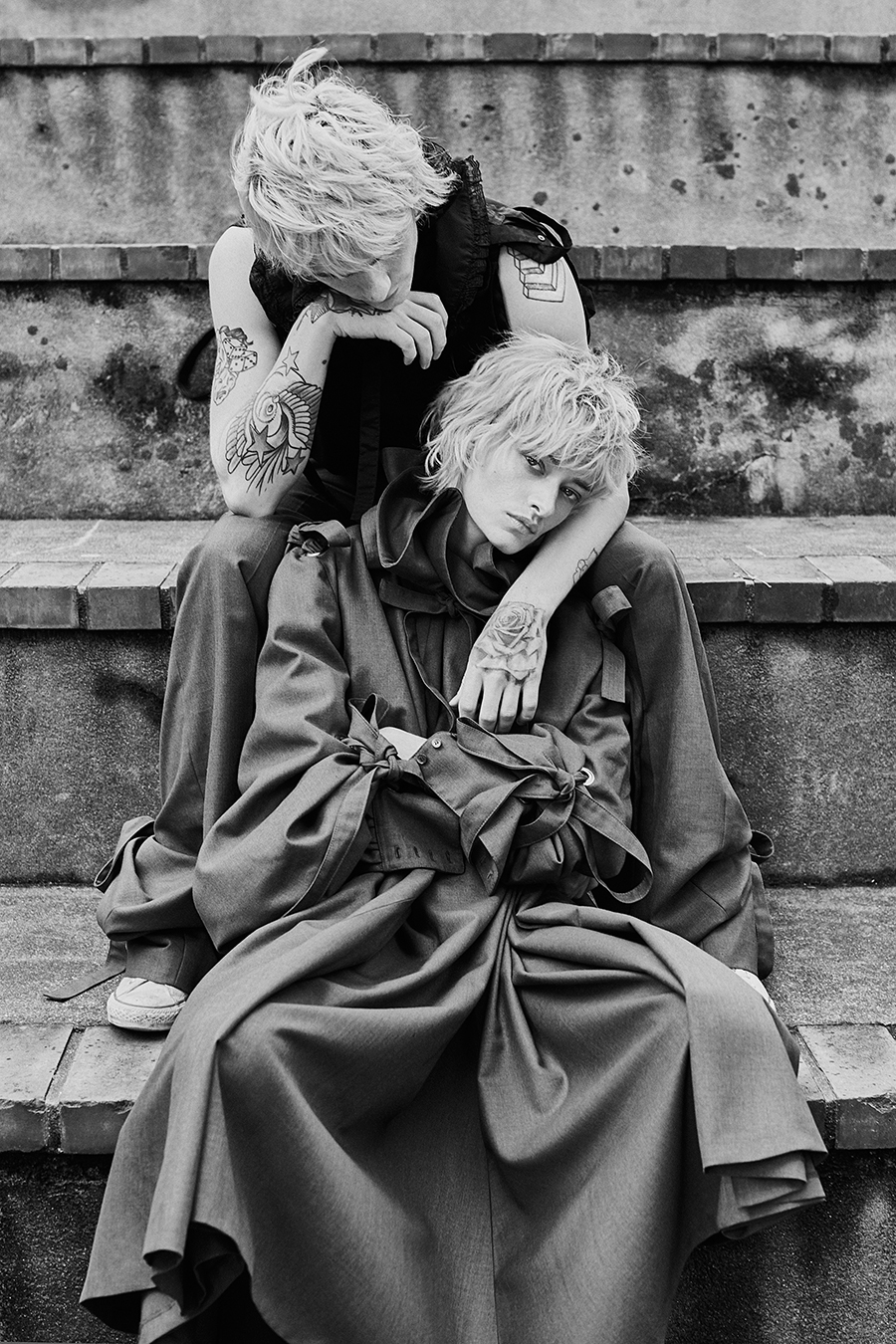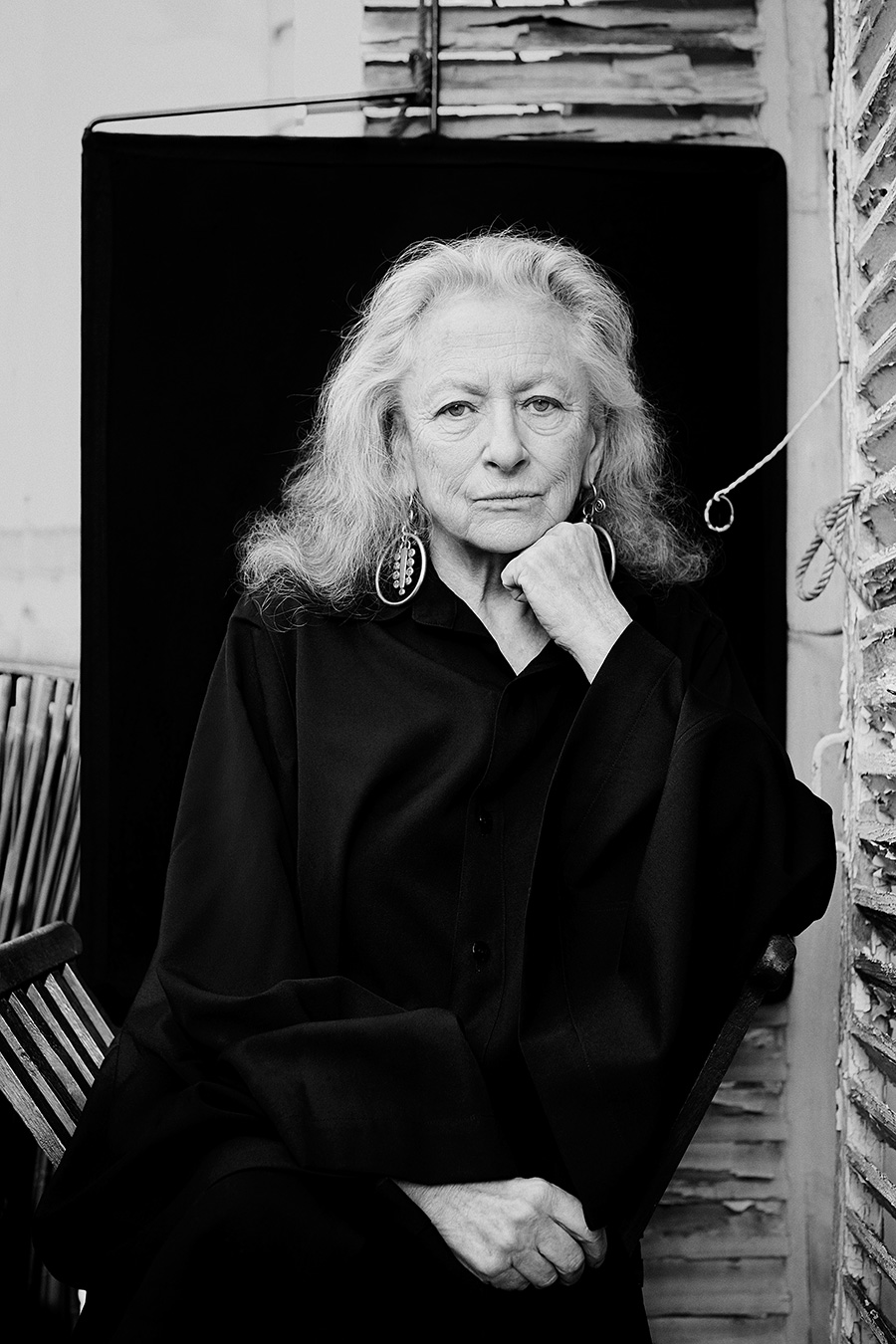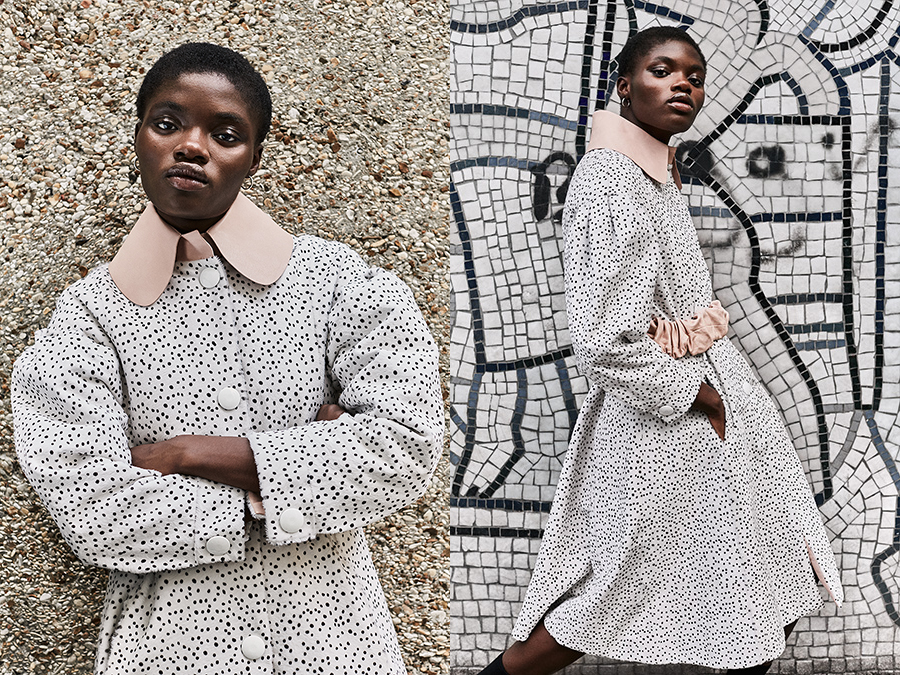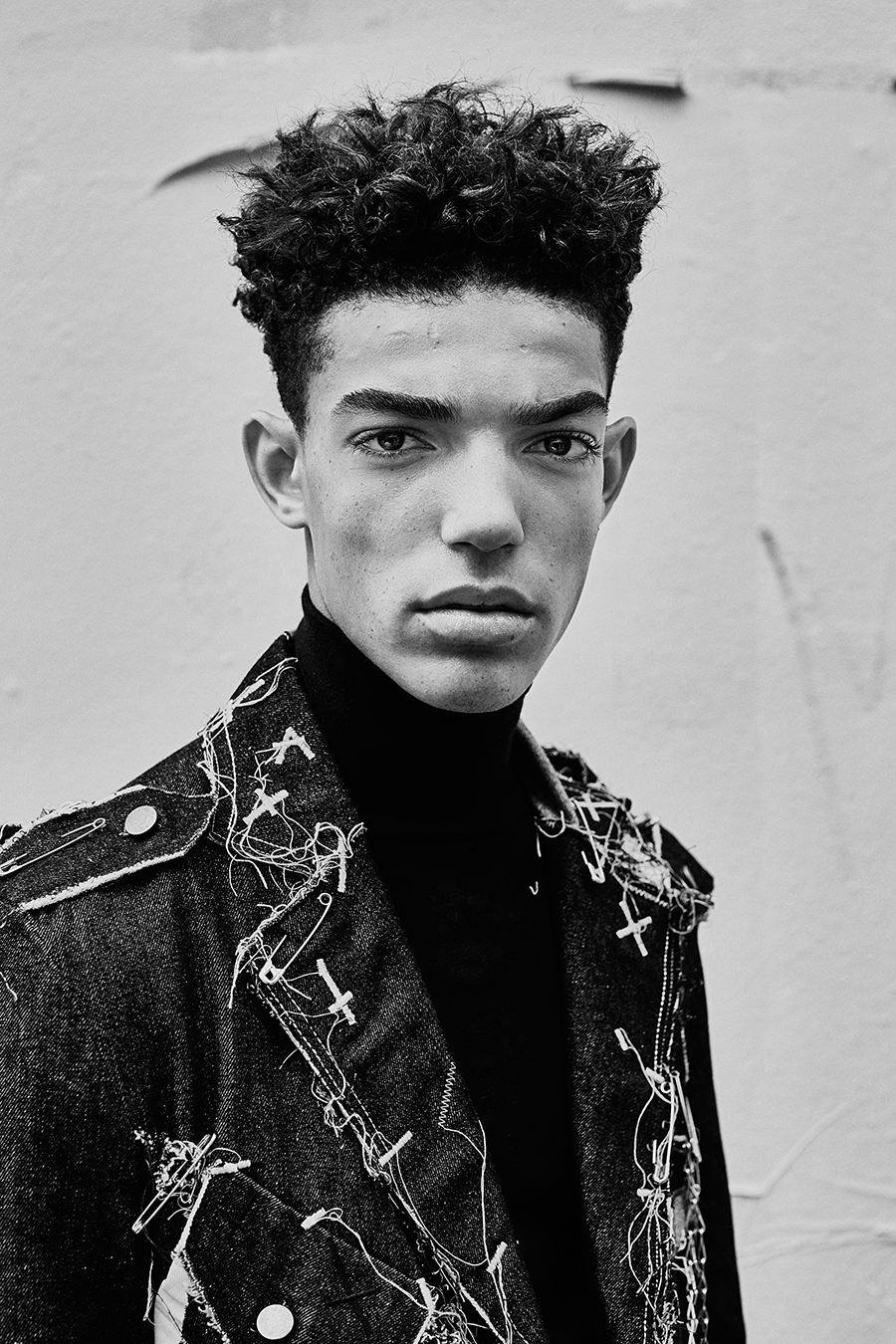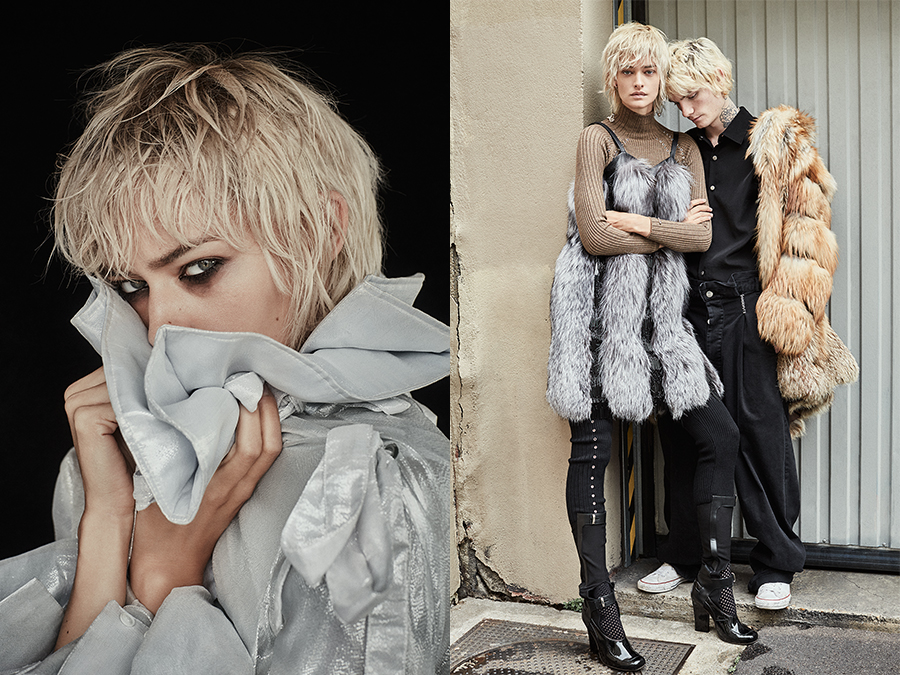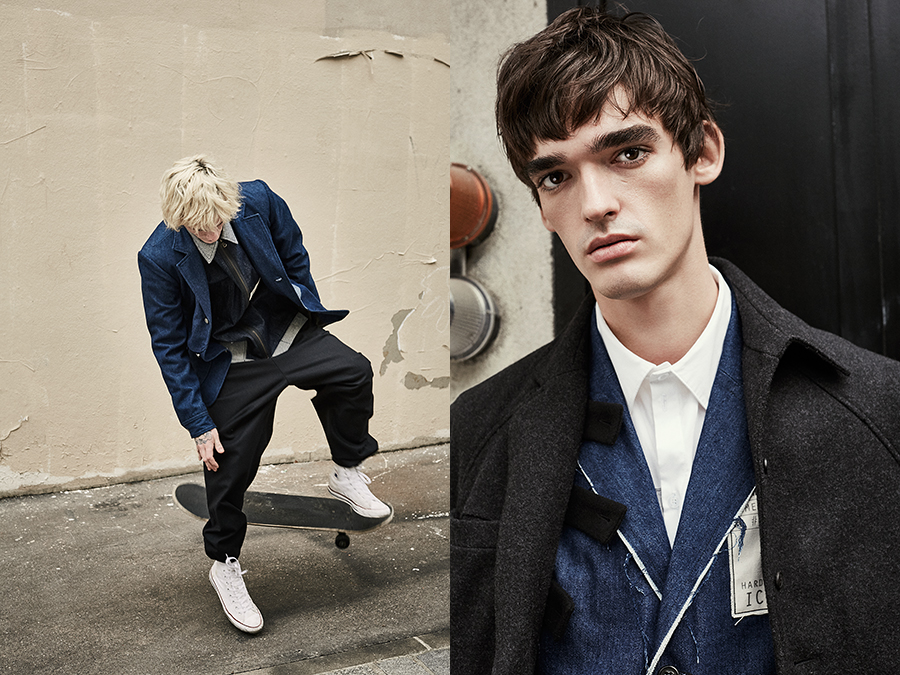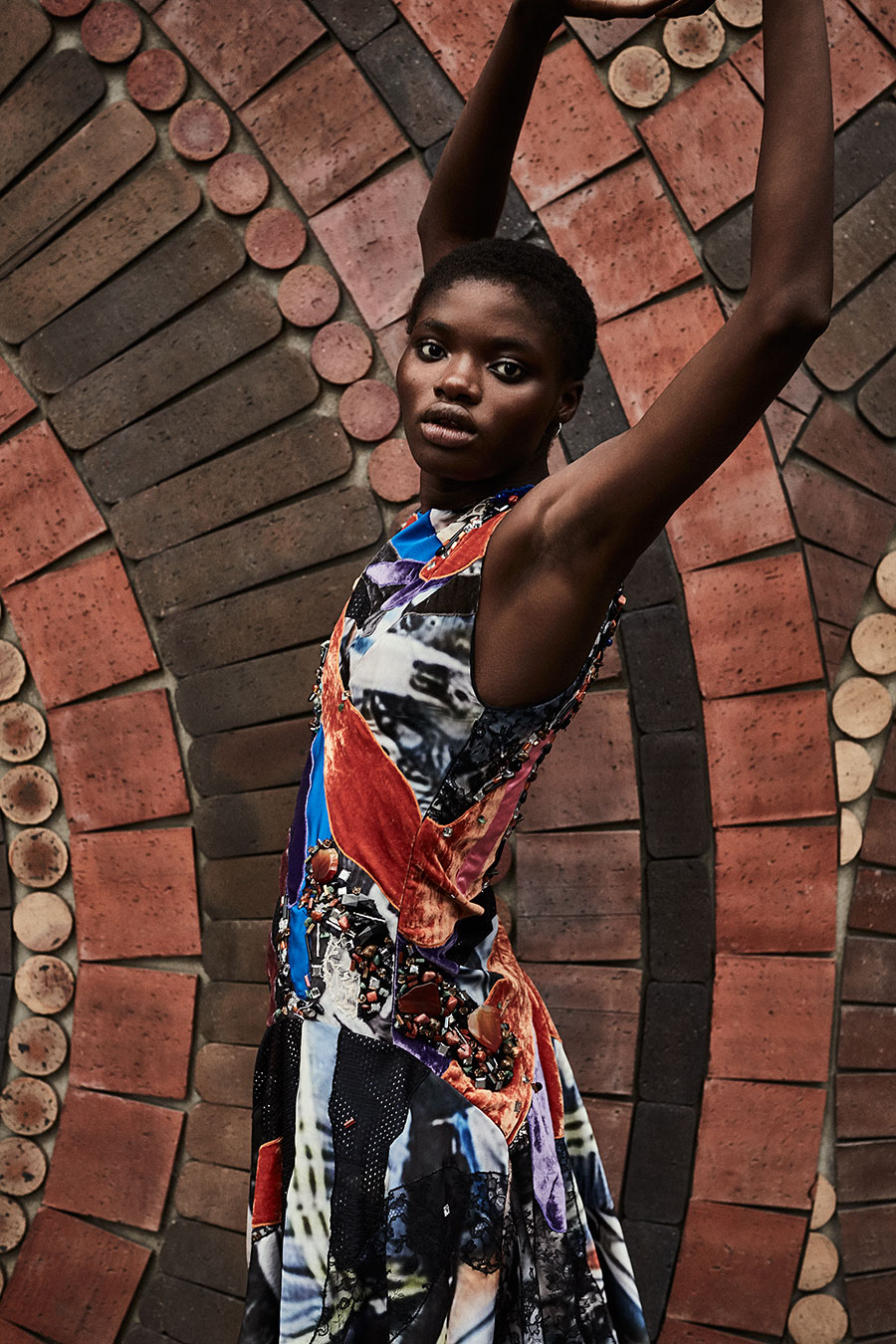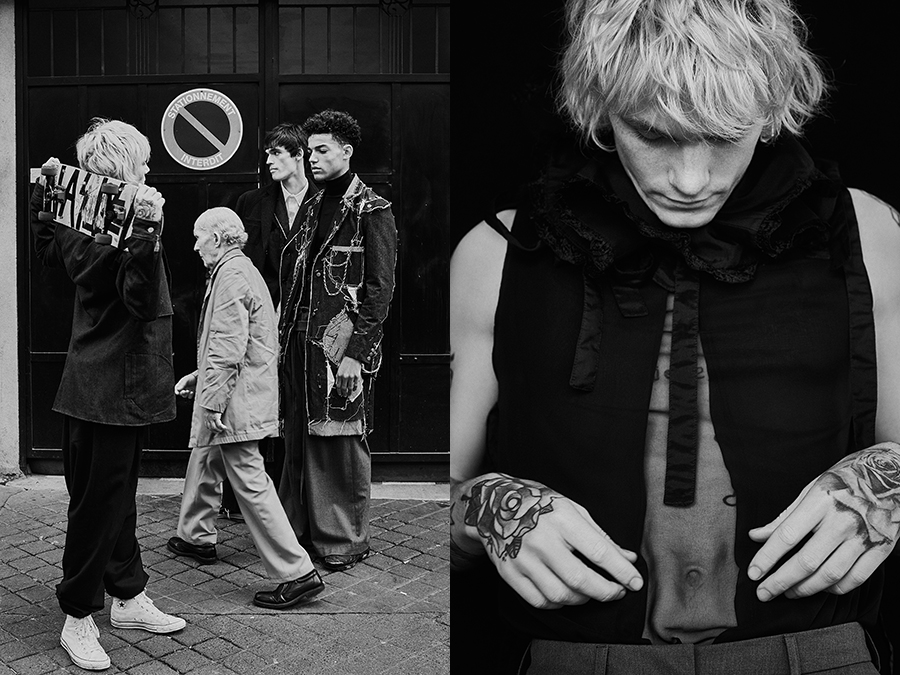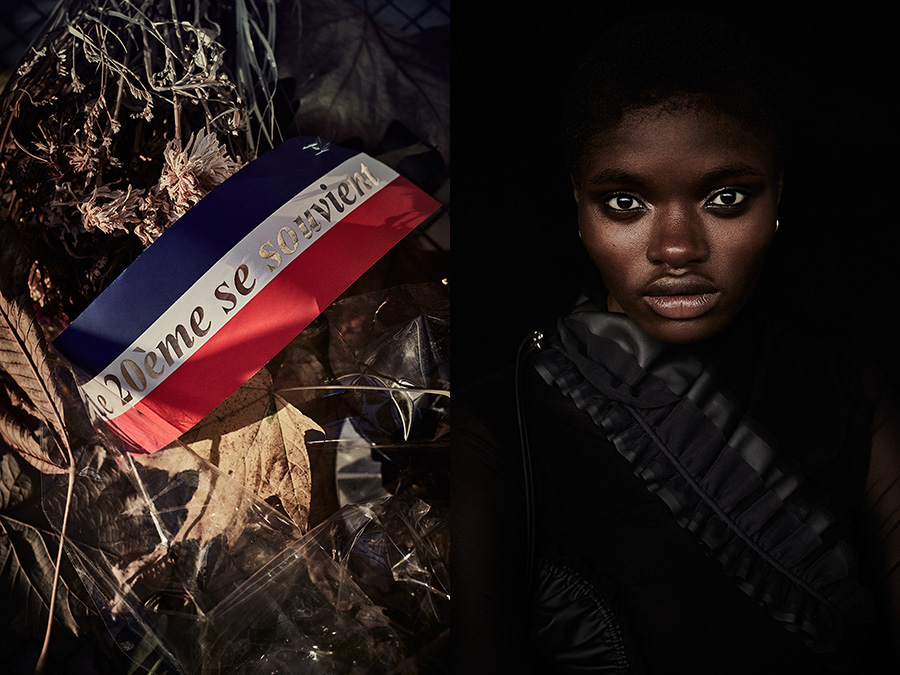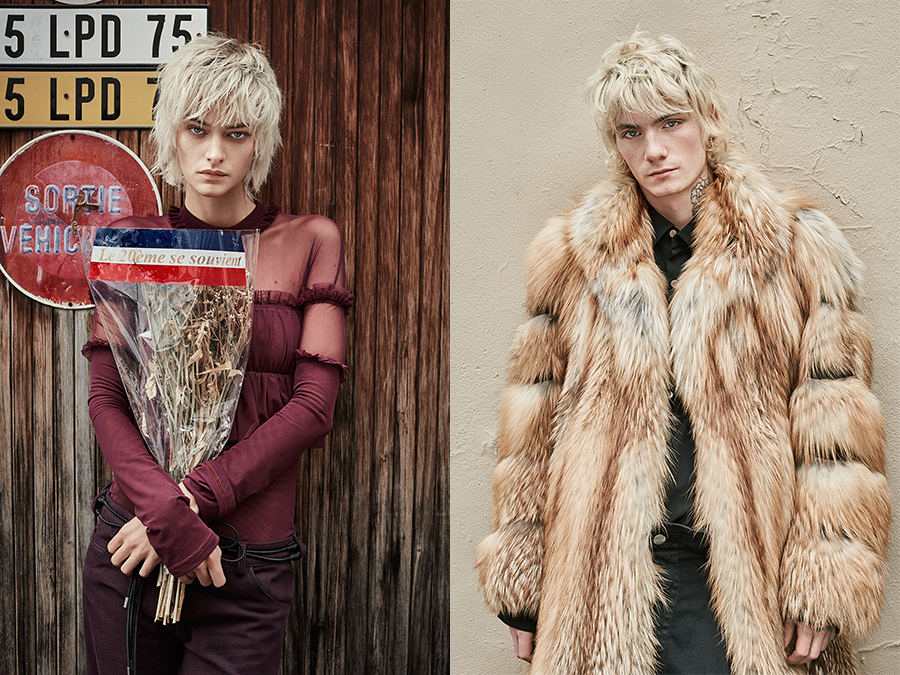CREATION GENERATIONS
Nadine and Paul both wearing Y/PROJECT.
Legends are not born, they are made.
Photography by René Habermacher.
Creative direction by Antoine Asseraf.
Styling by Rogelio Burgos.
Hair by Panos Papandrianos @ CLM.
Make-up by Yannis Siskos @ Airport.
Production assistant Marion Louapre.
Models: Nadine Strittmatter @ Next, Zoe Alayrangues, Paul L @ Rockmen, Timothée @ M Models, Florentin @ M Models.
Clothes by Drome, Icosae, Koché, Léa Peckre, Neith Nyer and Y/Project.
Special thanks to Versae @ Next, Adrianna @ Rockmen and Guillaume @ M Models.
Irene Silvagni, in vintage Yohji Yamamoto.
Today icons of the fashion industry, Peter Lindbergh, Steven Meisel, Martin Margiela, Paolo Roversi and Azzedine Alaïa were once young and on the outside. Yet before New York, before Milan, Paris gave them a chance.
Irene Silvagni, as fashion editor of Vogue Paris in the late 1980’s, fought for a new generation of talent despite nascent commercial pressure, supporting photographers and designers until she had to face a tough choice –
sell-out or pack-up.
(Hint: she didn’t sell-out).
Fast-forward over 27 years of Irene crafting the image of Yohji Yamamoto, fast-forward over her acting in a film alongside Jean-Pierre Léaud, fast-forward over then-nascent commercial pressure reshaping fashion entirely, fast-forward to today.
As the center of the city slowly shifts north and east to République, the question is, can Paris still give talent a chance, can there a new creation generation ?
(Hint: yes).
Zoe in a Drome dress.
Did you choose Paris or did Paris choose you ?
I have Russian origins, both my parents were Russian, I’m the great-great-great niece of Trotski. I was born during WWII in Cannes, because it was the free zone and we were in hiding. Then my parents chose Paris because they were refugees, I studied in Paris, started working, then married in Italy and lived there. And I would say I love Paris, sometimes I have a grudge against it because it’s not an easy city, but I feel like a world citizen, meaning I could move at any second. I am not trapped in Paris. But I think I didn’t choose Paris, it is Paris that chose me.
How does one become Parisian ?
Being born in Paris doesn’t automatically mean becoming a Parisian. I think you fall in love with this city, you set up camp, ground yourself, whether Paris accepts you or not, because it’s not that simple.
I’ve always thought, with much affection, that Rome was a whore and Paris a great lady. One chooses Paris, the skies, the roofs, the light, there are extremely endearing moments, and then moments where as with any grand lady, it’s not that great…
“Rome was a whore and Paris a great lady”
Timothée in Icosae sweater and jacket.
When is Paris – 19th, 20th, 21st century ?
I don’t feel that Paris is in the 21st century, but Belleville is a neighborhood I really love, very liverly, fun, and to me the mixing of cultures is very important.
For example in the south of France where I live part of the year, there is terrifying anti-Muslim, anti-North African racism, and it’s a shame. Paris has had this mixed culture for a longtime, and that’s formidable. When you have foreign roots, you feel it very deeply.
This “mixité” is not regressing yet, but these days people are afraid, and when people are afraid, they may turn racist, anti-semitic, etc. I don’t want to be too pessimistic, there are so many great people out there that are fighting for an integrated society.
Left: Nadine in Y/PROJECT. Right: Nadine and Paul in Neith Nyer.
What are your current projects ?
Christophe Lebourg, a fashion designer famous in the 90’s brand for his brand Dimitrios, and I are creating a school. My main project right now is transmission of knowledge, because so many people do not know, they haven’t been told about fashion, about art, about many things. This school would be in Nîmes, the city where denim was born – it has an incredible tradition. Some buildings have iron measuring sticks built into the walls.
“My main project right now is transmission of knowledge”
Paul and Florentin both in Icosae.
It seems the schools which train the most influential designers are less and less based in Paris…
With the exception of Studio Berçot, it’s true. The Bunka school in Tokyo is extraordinary. But you know many designers have never gone to school. It’s something you can have within you. You can learn cutting, pattern-making, but that’s learned quickly.
I’m still surprised by the consecration that is having a fashion show in Paris. But will it last ? In the US, Anna Wintour, with whom I’ve worked, truly supports designers, she has this power. But there is no one in Paris to do this. The issue is that fashion journalists don’t have the curiosity anymore. It’s the same everywhere but it’s sad.
Azzedine Alaïa would lend, not offer, dresses to about a dozen editors, and we would wear them to launch him, that’s how impassioned we were ! Today editors leave empty seats at fashion shows, openly saying “you’re not an advertiser, you don’t interest us”!
Zoe in Koché.
I remember at Vogue there was a wall with a magnificent picture of by Peter Lindbergh of Kirsten McMenamy with a dress, and one of my bosses asks “Who’s this, the designer ?”. I explained the dress was by Martin Margiela, a talented young designer.
“Maybe we don’t need in the office” my boss said.
“It’s your advertiser of tomorrow,” I replied, “if you remove this photo, I’m quitting tonight and I’m not coming back !”
I left journalism myself because when I was still at Vogue, I had been called in by the CEO of a big fashion company, who told me “Mme Silvagni, we are the ones paying your salary.” And I took the decision to stop, because the freedom to create is essential, for me or for designers…
Left: Paul, Florentin and Timothée in Icosae. Right: Paul in Y/PROJECT.
“the freedom to create is essential”
Do you imagine dying a Parisian ?
If the Front National were ever to get elected, I would leave France. Otherwise, I could die in the street tomorrow, in rue Notre Dame de Lorette where my dad was a shirt-maker, and, hop, be gone. My dad made the shirts and boxers of Maurice Chevallier right there, so it’s strange that I would come back to live here.
But if I were to chose…in Provence.
What would be your last look ?
Yohji Yamamoto shirt and pants. Black. And with a pair of ear rings.
Right: Zoe wears Lea Peckre.
The last meal ?
Pasta. My husband was Italian.
Any objects you would take with you to the grave ?
Ancient blue and green ceramic from the south of France which I collect. A big ceramic vase in which I would put peonies – I love peonies.
Is Paris Dead ?
No. I love Paris, I am critical, auto-critical even, but Paris is a city that survives, there’s something in the ground or under the Seine which can spring up.
Because there is an active minority who really loves Paris. It’s very difficult not to love Paris – it has many faults – but I think it won’t disappear any time soon.
Left: Nadine wears Lea Peckre top and pants. Right: Paul wears a Neith Nyer coat.
